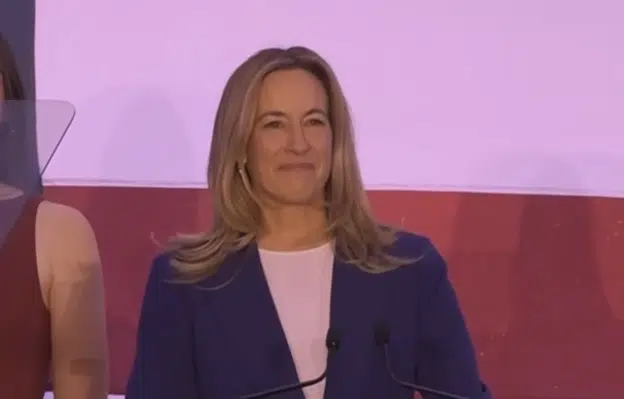
By Bill Wilson
The Democratic party’s issues appealing to working class white voters are well documented, but new analysis shows the radical left is isolating itself from working class minorities without a college education too.
There have been warning signs for years now that the disastrous economic and social agenda adopted by party elites lacks mass appeal, especially to working class voters concerned about inflation and the economy. The assumption that Democrats could make up for the departure of working-class whites with working-class minorities is proving to be harder than expected and may be outright false.
Recent elections indicate that as the globalist left becomes increasingly detached from the working class, it will become more difficult to attract middle class voters – white and non-white. This is a massive issue for the left, because despite rising educational attainment, Americans without a college degree still far outweigh those with one – and this is especially true with minorities and in swing states.
According to exit surveys, Americans without a college degree made up 59% of the total electorate in 2020. In the midterms last year, the electorate leaned slightly higher educated than in the General, but non-college voters still made up 57% of the midterm voter pool. This is not a group the left can afford to write off entirely, and evidence shows non-college voters are moving toward the right, regardless of race.
The last time Democrats won non-college voters was in 2012 when Obama won this block 51%-47%. However, by 2016 Clinton lost non-college voters 44-52%. In 2020, Biden did slightly better than Clinton but still lost non-college voters to Trump by a margin of 48-50%.
As for minority non-college voters, minorities still favor Democrats, but non-college-educated minorities are starting to drift toward the GOP just like whites. According to exit polls, the Democratic Party’s share of the non-college minority vote dropped 11 points between 2008 and 2020.
While Biden did win non-college minorities by 46 points in 2020, Trump increased his share of their vote by six points between 2016 and 2020. In 2016, Trump won 20% of the non-college minority vote and in 2020 he won 26%.
Non-college minorities also moved eight points to the right between the 2018 and 2022 midterm elections. In the 2018 midterms Democrats won minorities without a college degree by 76% to 22%. In the 2022 midterms Democrats won this block by 68% to 28%.
Of note is the fact that while education is growing among minorities, minorities without a college degree make up a substantial share of the electorate. In the 2022 midterms, minorities without a degree made up nearly a fifth of the electorate (18%) while those with one made up just 9%.
General elections historically attract a large proportion of non-college educated voters compared to mid-term elections, and 2020 was no exception. Minorities without a college degree made up a full quarter of the 2020 electorate, while college-educated minorities made up a tenth.
While Democrats have largely failed to recoup the white non-college vote in battleground states like Pennsylvania, Ohio, and Florida, they have also lost with non-college minority voters in these pivotal states. What is more, the pool of non-college minorities is far greater than the pool of college-educated minorities in battlegrounds.
In Pennsylvania in the midterms last fall, minorities without a degree made up twice as many votes as those with a degree (12% compared to 6%).
In Ohio, non-college minorities made up almost twice as many votes as those with a degree (11% compared to 6%).
Minorities without a college degree made up a full 22% of voters in Florida in 2022, while minorities with a degree made up 14%. Florida saw a massive swing in minority voters toward the GOP between 2018 and 2022, but the largest shift occurred among minorities without a college degree. The GOP won minorities without a degree by a whopping 18 percentage points more in 2022 than in 2018 going from 26% to 44%.
In the Virginia governor’s race in 2021, Americans for Limited Government Foundation showed how lower-income and minority voters played a pivotal role in the precincts that shifted away from the Democrat candidate between 2017 and 2021 and contributed to Glenn Youngkin’s victory. Precincts that became significantly less Democrat had higher Hispanic and Asian populations, and an average income nearly 50% lower than those which became more Democrat.
The ten precincts that shifted away from the Democrat candidate by the greatest margins had an average Hispanic population of 35.9%, an average Asian population of 24.9%, and an average household income of $1,042,961. The average Democrat shift in these precincts between 2017 and 2021 was -23.91%.
Recent also shows a steep decline in the share of Americans saying a college education is worth it, with less than half of Americans saying a college education is a good idea. Just 45% of Americans now say a college education is a smart investment, down from 55% in 2016. Among whites, the belief that a college education is a good investment has dropped 11-points, from 52% in 2016 to just 41% now. Blacks have seen an 8-point decline, from 56% in 2016 to 48% now, and Hispanics have seen a 14-point decline, from 68% in 2016 to 54% now.
The modern Democratic Party’s disastrous economic policies, refusal to stay out of foreign meddling, and unhinged social agenda are just a few reasons why this shift could be taking place. However, like the slow stream of non-college whites away from the left, these trends take years to fully manifest.
Minorities as a whole still favor Democrats by a significant margin, but what we are seeing continually is the division between the ivory tower elites and the working class. Race is on track to become less of an important distinction than the educational divide when it comes to partisanship, and this could be an issue for the left considering belief in the merits of the college industrial complex is plummeting.
Bill Wilson is the former President of Americans for Limited Government.






